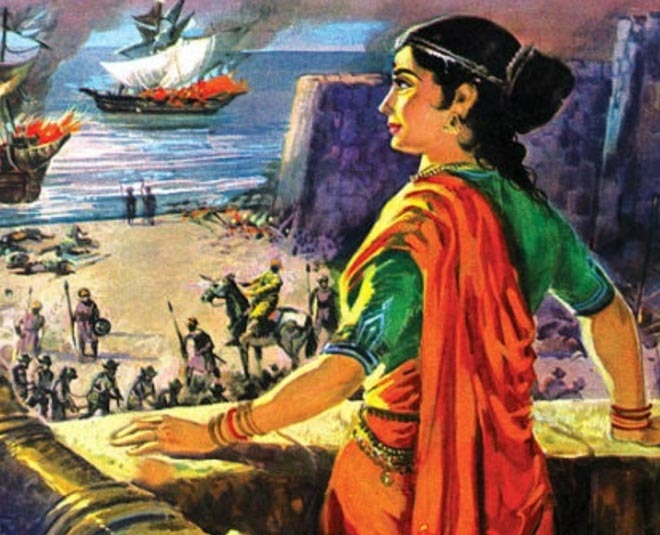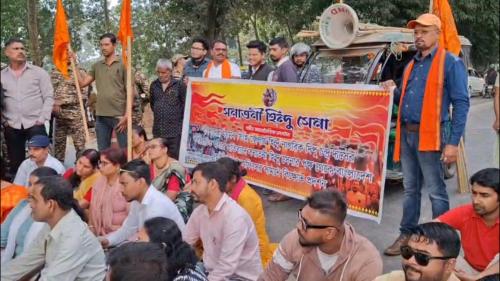Srinagar/New Delhi, April 27 (IANS) In 2022, when the West is fighting to install women in higher ranks of the hierarchy and applauding for months at the happy chance if it does somehow happen, in the East, from the beginning of time, women assumed positions of power and were celebrated in all ranks of order across fields. The improving Political, Social, and Economic landscape of the Naya Kashmir is a reminder of its glorious past - composite culture and religious tolerance, peace and serenity, flourishing art, saints and peers adding purpose to life - an atmosphere of trust and happiness all as a result of the interest of the crowned ruler in his subjects. One such revered figure that played a significant role in shaping Kashmir's history is Kota Rani, the woman who ruled the hearts of her subjects and demanded their respect through her strong character and exceptional abilities as a ruler. Her role is considered pivotal in the larger scheme of things in Kashmir's past and this is why to date she is deeply embedded in the Kashmiri psyche. Kota Rani was an intelligent and beautiful woman, a warrior on the field, a tactical administrator, a diplomatic military strategist, and the nurturing mother of her empire in the 14th century AD. She was the crusader against the Central Asian invaders and all the forces that terrorised Kashmir. As the last Hindu ruler of Kashmir, and a woman, Kota Rani's reign was a series of troubles and turmoil but she persevered against all odds. With the decline of the Lohara Dynasty, when Kashmir was without a ruler, Prince Rinchen, a descendent of Ladakh's legendary ruler Ngo Rub assumed the throne in 1320 and married Kota Rani. After his death, she was remarried to ruler Udyandev (1323-1338). In these 15 years, Kota Rani with the support of Rinchen's trusted Wazir, Shahmir, gave Kashmir stability and order. Shahmir was a man who sought refuge in Kashmir during King Sahadev's (Lohara Dynasty) rule. Some historians believe he was a Turk and some say he was a descendent of Arjun, one of the five Pandavas. Shahmir was gifted a village by King Sahadev, allowing him to have a strong foothold in Kashmir. Together he and Kota Rani were a force not to be reckoned with. During her tenure, outsiders tried every vile way to capture the State but her ministers' loyalty and submission to her were a huge obstruction. Being a one-woman show it is surprising how well she handled the final years of Hindu reign in the state. The Kashmiri historian Jonaraja sings his praise for Kota Rani in one of his poems: "As the canal nourishes cultivated fields with water, so did the Queen nourish the people by bestowing much wealth on them. She was to the kingdom what the moon is to the blue lotus, and is to the enemy she was what the luminary is to the white lotus." Her father Ramachandra was the Prime Minister and commander-in-chief of King Suhadev. When Ladakhi prince Rinchen lost the battle of succession to his uncle, he took refuge in Kashmir and was appointed as a minister in Suhadev's court. Here Rinchen became friends with Shahmir. A Mongol leader Zulju (Dulacha) invaded Kashmir and defeated King Sahadev who ran away to Tibet to save his life. Kashmir's topography and expenditure to maintain his army forced Dulacha to ultimately leave Kashmir in chaos and to pacify the situation Ramachandra took over the throne with Rinchen as an administrator. Rinchen killed Ramachandra for his position. He was a clever man and with his words and diplomacy, he won the heart of Kashmiris. He appointed Ramachandra's son Ravanachandra as his chief advisor and gifted him the jagir of Ladakh and Lar. He then married Kota Rani who put the State's needs above her hatred towards her father's killer. After Rinchen's chance death in 1323 AD, Kota Rani married his brother but singularly ruled Kashmir. When Kashmir was again attacked by a Mongol-Turk, Achalla, her husband Udyandev fled to Tibet. It was Kota Rani who pushed back the enemies and killed Achalla, an act that crowned her the ruler in her own right. She chose Bhatta Bhikshana as her Prime Minister and kept her subjects united through her love and protection. All her decisions and duties were in line with Kashmir's prosperity. One such instance was her idea to construct the canal KutKol (named after her) to prevent Srinagar city from flooding. River Jhelum moves through the canal at the entrance of Srinagar and the water moves out to merge with the River at the city's periphery. In 1339, the power-hungry and offended Shahmir killed Bhatta Bhikshana through deceit, staged a coup, and asked Kota Rani for her hand in marriage. Kota Rani committed suicide and offered her intestines to Shahmir as his wedding gift. Shahmir went on to become the first Muslim ruler of Kashmir - Sultan Shams-ud-Din. Kota Rani's passing marked the beginning of women's downgrade in society. Even during the reign of the benevolent Zain-Ul Abe-din (or Badshah) in Kashmir, women were deprived of basic rights and privileges that erstwhile rulers freely bestowed upon them. Although Kota Rani's tale is full of battles and personal compromises for the State, she still emerges as Goddess incarnated for her people. Her courage, bravery, intelligence, and diplomacy have set a benchmark. Though her misfortunes never allowed her a moment's peace, she always had her maternal hand extended over Kashmiris as protection. With the fast-changing landscape of Kashmir today and the Prime Minister's personal interest in elevating women's status in the Valley through self-employment schemes, easy financing, and reserved positions of authority in the government, it is hoped many Kota Ranis will come forth and bring back the Valley's lost glory.
Kota Rani: Mother Queen of Kashmir
- by Rinku
- April 27, 2022 2 minutes

Kota Rani: Mother Queen of Kashmir.










